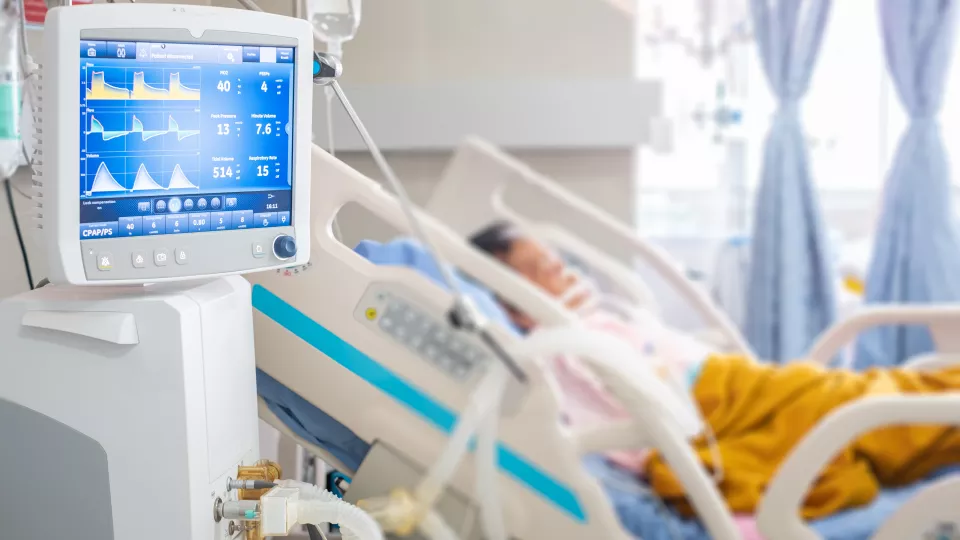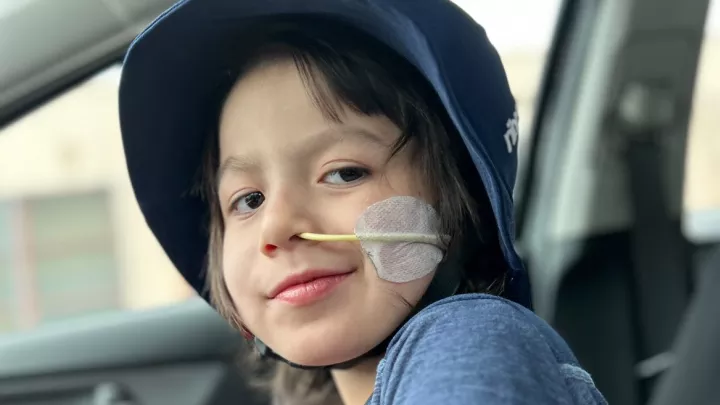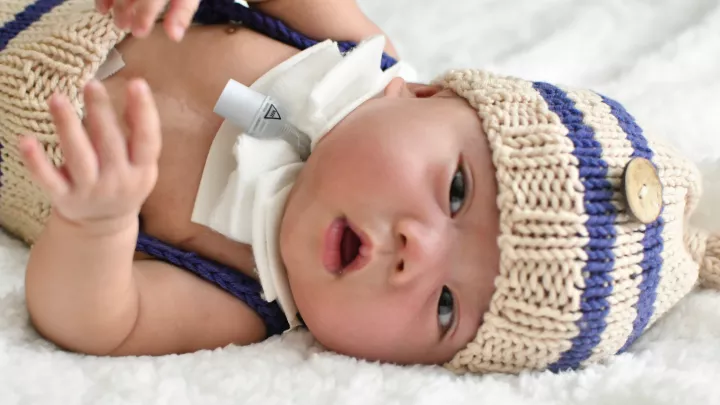
Machine Learning Could Help Children on Ventilators in the Pediatric Intensive Care Unit Breathe Easier
Critically ill children on ventilator support can experience a mismatch between their breathing efforts and the rhythm delivered by the ventilator. This subtle mismatch, called patient-ventilator asynchrony (PVA), between the child’s own efforts to breathe and the rhythm that the ventilator delivers is difficult to detect, but can worsen patient outcomes.
PVA can raise risks of infection, lung injury, diaphragm dysfunction and adverse neurocognitive effects. But how PVA affects children is still unknown.
“There are likely ways to improve what we’re doing for kids who are on the ventilator by finding a better way to monitor this over time,” says Robinder Khemani, MD, MsCl, Attending Physician in Pediatric Intensive Care at Children’s Hospital Los Angeles. “Many of these very sick patients can develop unexpected complications from the very procedures that we use to help them. We miss a lot of patient interactions with the ventilator because we’re not able to recognize when ventilator settings are unsuited to how different children breathe—we suspect that many of these children are not supported in the way that they should be.”
Pinning down PVA
A CHLA research team led by Dr. Khemani received a National Institutes of Health R01 grant for $3.4 million over five years to examine the frequency and risk factors for common types of PVA in critically ill children. “In this project we will try to understand how to identify this disconnect between the patient’s breathing and the ventilator,” says Dr. Khemani. The study also includes hospitals in Canada and the Netherlands. “Our three research groups have all worked on asynchrony, but not in a comprehensive and multicenter approach like this so far.”

The patient-ventilator mismatch can occur in multiple ways, as children’s breathing patterns vary depending on their weight, size and age, and also change over course of time spent on a ventilator. Different studies use various definitions for PVA subtypes. But so far, no study has been large enough to evaluate the relationship between different types of PVA and patient outcomes, nor have any PVA studies focused on the highest-risk patients.
“There are many types of PVA, but we still don’t know which PVA subtypes are truly most harmful or are the most frequent,” says Dr. Khemani. “We need to develop a common set of definitions and measurements, especially for children.”
Patient-ventilator disconnect
“It takes a very highly trained human to recognize PVA,” says Dr. Khemani. “But computers can do this very well. Our colleagues at the Virtual Pediatric Intensive Care Unit (vPICU) here at CHLA have been working with us on this project for a few years and have developed machine-learning algorithms that can identify these different types of breathing asynchronies in children on ventilators.”
In the study, the team will collect measurements over time from 200 children on ventilators and combine this data with analysis of data from 350 children in other studies including an ongoing clinical trial that is testing a novel ventilator strategy.
The researchers will also examine if PVA is independently associated with poor clinical outcomes, and the effects on the body when breathing patterns don’t coordinate with the air flow of the ventilator. “By the end of this project, we hope to have developed these algorithms and validate that they work in three different hospitals using data from many different children,” says Dr. Khemani. “Simultaneously, we will build a tool to automatically detect PVA by using machine-learning algorithms to analyze ventilator data. We will test how well the tool helps providers to identify the minute-to-minute changes in patients and potentially alert the bedside team that an adjustment to the ventilator may be needed.”
Synchronizing ventilator to patient
“We have a wide age spectrum in our intensive care units, and the breathing patterns of children are both age and disease dependent,” says Dr. Khemani. Children can end up on ventilators with lung failure from severe pneumonia or acute respiratory distress syndrome (ARDS), in which infection or trauma causes swelling, inflammation and fluid buildup in the lungs. Sometimes the body’s response to the initial injury can harm the lungs even more than the infection or trauma itself. But a stint on a ventilator can also raise a child’s later vulnerability to lung disease, asthma or sleep-disordered breathing.
Children can also experience ventilator-induced lung injury, leading to damage in other organs like the kidneys or the heart.
“It might affect their brain function, too, and that might not be directly from the ventilator, but a consequence of all the medications and anesthetics and sedation to help them to tolerate the ventilator,” says Dr. Khemani. “We weigh the risks and benefits to minimize potential harms and hopefully get them off the ventilator as soon as they’re ready, because the less they’re exposed to it, the better.”
To reduce the risks of injury, medical teams generally use the ventilator to fully control the patient’s breathing, and then gradually allow children to breathe on their own again as they recover. But this strategy might itself be harmful. “Because what actually happens is patients’ breathing and overall muscles weaken, and then it becomes harder for them to get back to normal afterward, or even get off the ventilator,” says Dr. Khemani.
“A better approach is to keep the child participating in breathing as much as possible. So that’s where this study really comes into play, by constantly tracking the interaction between the patient and the ventilator to ask if the ventilator is giving the child just the right amount of support, precisely when needed.”


